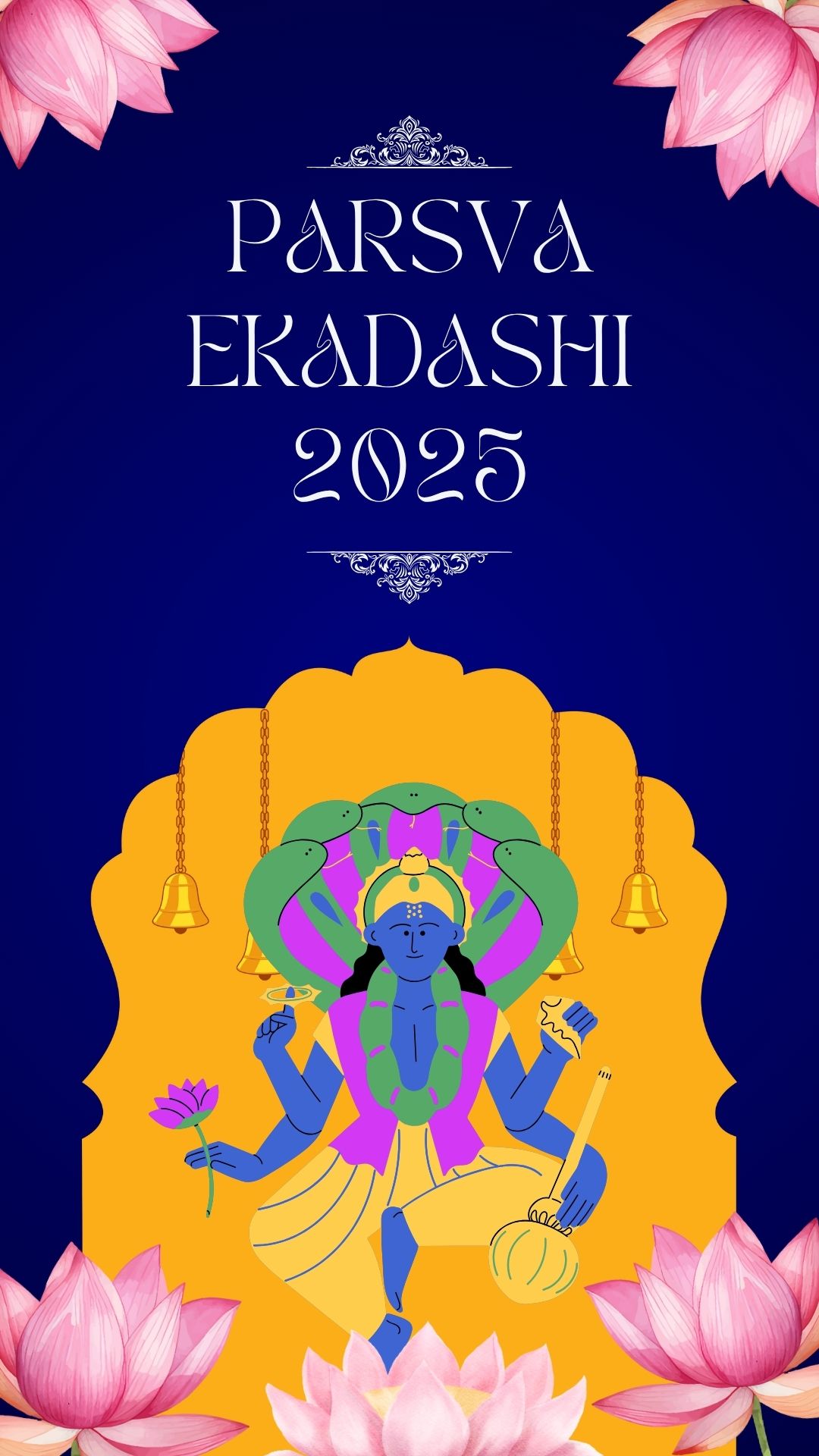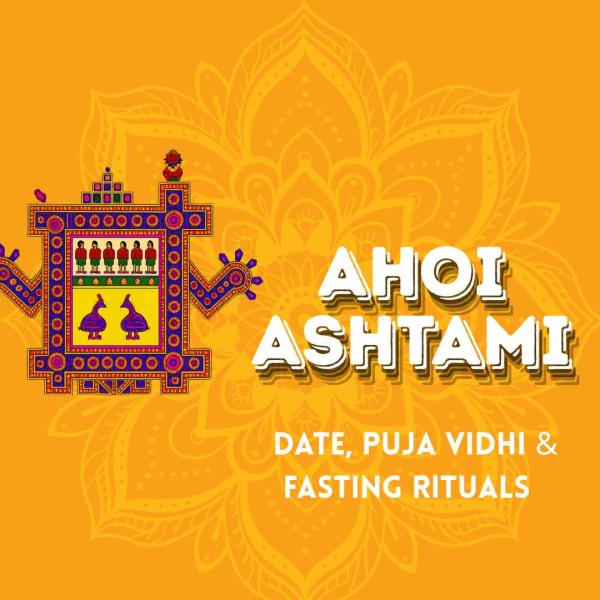Parsva Ekadashi Date: September 3, 2025
Tithi: Bhadrapada Shukla Ekadashi
What is Parsva Ekadashi?
Parsva Ekadashi, also known as Parivartini Ekadashi, is a sacred day in the Hindu lunar calendar observed during the Shukla Paksha (bright fortnight) of Bhadrapada month. It signifies a pivotal moment during Chaturmas when Lord Vishnu, who is believed to be in yogic sleep (Yoga Nidra), turns from his left to right side. This divine turn is seen as highly auspicious and is a day of deep devotion and fasting for followers of Lord Vishnu.
Parsva Ekadashi Date & Time (Muhurat) 2025
- Parsva Ekadashi: Wednesday, September 3, 2025
- Ekadashi Tithi Begins: 27:53+ on September 2, 2025
- Ekadashi Tithi Ends: 28:21+ on September 3, 2025
Religious and Spiritual Importance
Chaturmas is the four-month period of penance, introspection, and spiritual growth in the Hindu tradition. Parsva Ekadashi marks a turning point—both literally, as Vishnu changes posture, and symbolically, as devotees re-energize their spiritual disciplines.
Fasting on this day is believed to cleanse sins and grant liberation (moksha). The spiritual energy of this day is elevated, and prayers are considered to bring accelerated blessings. Many saints and sages prescribe this Ekadashi as one of the most potent among all 24 Ekadashis in a year.
Key Rituals to Follow
1. Fasting (Vrat)
Most devotees observe a fast from sunrise to the next day’s sunrise. Some opt for nirjala vrat (complete fast without water), while others follow a phalahar (fruits and milk only) regimen.
2. Vishnu Worship
Idols or pictures of Lord Vishnu are worshipped with Tulsi leaves, incense, lamps, and sweets. Chanting the Vishnu Sahasranama or “Om Namo Narayanaya” is highly recommended.
3. Parana (Breaking the Fast)
The fast should be broken on Dwadashi tithi after sunrise with light, sattvic food, ideally after performing charity or feeding Brahmins.
4. Dana (Charity)
Donating food, clothes, and essentials to the poor or Brahmins is considered extremely meritorious on this day.
5. Visiting Temples
Many temples—especially ISKCON centers and Vishnu temples—hold special bhajans and events to mark the occasion.
Frequently Asked Questions (FAQs)
1. Why is it called Parsva or Parivartini Ekadashi?
“Parivartini” means “one who turns.” It refers to Lord Vishnu turning to his right side during cosmic sleep.
2. What is the connection to Chaturmas?
Parsva Ekadashi falls in the middle of Chaturmas, making it a turning point for intensified spiritual discipline.
3. Is fasting compulsory?
Not compulsory, but highly recommended. It can be tailored based on health conditions.
4. Can elderly or pregnant women fast?
They can observe a light fast or phalahar, depending on health and comfort.
5. What foods should be avoided?
Grains, pulses, onions, garlic, and non-vegetarian food should be strictly avoided.
6. What mantras are ideal for this day?
“Om Namo Bhagavate Vasudevaya,” Vishnu Sahasranama, and Narayana Kavacham.
7. What is the mythological origin of Parsva Ekadashi?
According to scriptures, Lord Vishnu’s change in sleeping posture signifies cosmic balance restoration.
8. What is the ideal time for Vishnu Puja?
Early morning or evening during sandhya (twilight hours).
9. Can we sleep during Ekadashi day?
Daytime sleep is discouraged; devotees are advised to stay engaged in bhakti.
10. How is it different from other Ekadashis?
Its timing within Chaturmas and divine symbolism makes it spiritually more impactful.
11. Can children observe this fast?
Children can participate partially by avoiding grains and joining in the puja.
12. What are the benefits of observing this Ekadashi?
Karmic cleansing, mental peace, and spiritual upliftment.
13. What if someone forgets to break the fast on Dwadashi?
It’s considered a dosha. Ideally, one should perform Parana before Dwadashi ends.
14. Is community prayer recommended?
Yes. Satsangs and bhajan sessions elevate spiritual energy.
15. How do ISKCON temples celebrate this day?
With bhajans, discourses on Bhagavad Gita, Tulsi archana, and prasadam distribution.
16. Are there specific legends tied to this Ekadashi?
Yes, involving King Bali and Lord Vamana, where Bali’s devotion earned Vishnu’s favor.
17. Can we start a new spiritual practice on this day?
Absolutely. It’s a highly auspicious day to begin mantra chanting, seva, or donations.
18. Is this Ekadashi popular in all regions of India?
Widely observed in North and South India, especially by Vaishnavas.
19. Can we listen to devotional music instead of chanting?
Yes, listening to bhajans is also a form of bhakti.
20. What is the spiritual meaning of Vishnu turning sides?
It symbolizes cosmic dynamism, transformation, and balance.
21. Are there any festivals following this Ekadashi?
Yes, Vamana Jayanti and Anant Chaturdashi follow shortly.
22. Is there any role of Tulsi in the rituals?
Yes, Tulsi is essential in Vishnu worship. It should be offered during the puja.
23. Is Ekadashi more beneficial when observed with family?
Collective devotion enhances the spiritual atmosphere and bonds.
24. Are there any digital tools to track Ekadashi timings?
Yes, Drik Panchang, ISKCON apps, and Hindu calendar tools help with reminders.
25. Can we observe silence (maun vrat) along with fasting?
Yes, it deepens introspection and reduces external distractions.
Sources:
- Drik Panchang
- ISKCON
- Hindu Blog
- Scriptures: Skanda Purana, Bhavishya Purana, Padma Purana
Stay tuned for more updated guides on important Hindu fasting days and festivals!


1 Comment